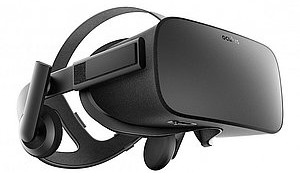Perfect virtual acoustics

A VR headset not only has to offer an image this is as 'real' as possible, but the sound also has to give the wearer of the headset the feeling that they are actually in the displayed virtual environment. VR manufacturer Oculus is therefore funding research by acoustics engineer Maarten Hornikx from the TU Eindhoven, who hopes to develop, at the same time, a simulator that will help the visually impaired to perceive their environment.
Echo localisation
“We are aiming very high”, says Hornikx about the cooperation with the American company. “We will try to get as close as possible to the real acoustics.” The sound that will eventually be generated by the VR headset from Oculus has to be indistinguishable from the real sound. The company does not yet have any immediate applications in mind, but the researcher from Eindhoven does. He is working on 'echo location', a method that allows the visually impaired to sense their environment through the reflection of click sounds that they generate themselves. In order to learn this technique they could practise it in a virtual reality environment. But that requires an extremely accurate representation of reality.
Office space
For his research Hornikx built a real office space and measured the dimensions and the acoustics properties of all the materials. Subsequently acoustic tests were performed and the results recorded. These results where used for the reproduction of sound in the Oculus headset. The acoustics were also calculated using the sound wave model of his research group, based on the dimensions of the office and the material characteristics. This was done for the entire sound spectrum, which, particularly for the high frequencies, requires a considerable amount of computing power.
Auralisation
The computed auralisation is then compared with the measured auralisation in order to determine how much the computer auralisation differs from the real one. A second comparison is carried out with test subjects, who are standing in the virtual office using the Oculus headset. They get to hear both auralisations and have to indicate whether they can hear a difference. One of the objectives of this is to know how much detail can be omitted from the auralisation without the test subjects detecting the difference in quality.
Hornikx hopes that the project, which will initially be for a period of one year, will be extended to four years. Oculus pays the projects costs — about a quarter of a million euro for the first year — entirely.
